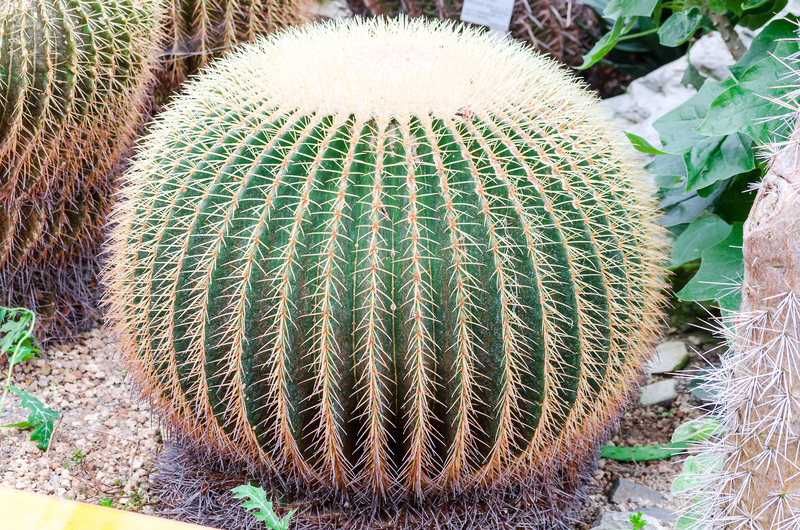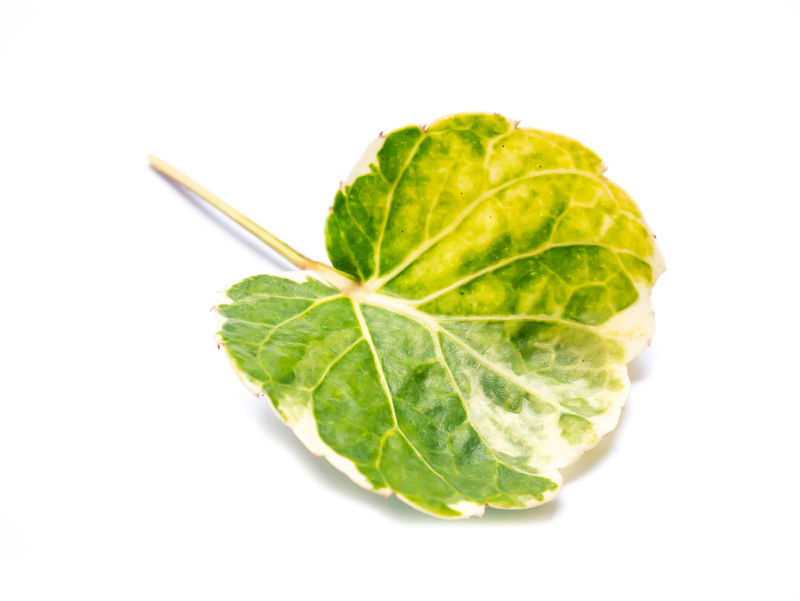Elevate Your Green Space: The Art of Vertical Gardening
Posted on 04/06/2025
Elevate Your Green Space: The Art of Vertical Gardening
Are you dreaming of a lush, vibrant garden but feel limited by a lack of horizontal space? Vertical gardening is revolutionizing the way we bring nature into our homes, patios, and urban environments. Learn how you can unlock the endless possibilities of your space through the art of vertical gardening.
What is Vertical Gardening?
Simply put, vertical gardening is the technique of growing plants upwards, rather than outwards. By using structures such as walls, trellises, stacked planters, or modular living wall systems, you can create a thriving green oasis in even the smallest areas. This approach is not only decorative but also innovative, creative, and highly practical for both indoor and outdoor spaces.
Why Choose Vertical Gardening?
- Space-Saving: Perfect for balconies, small yards, rooftops, and apartments.
- Visually Stunning: Create dramatic living walls and lush green backdrops.
- Improved Air Quality: Plants filter air, reduce pollutants, and promote healthier environments.
- Better Use of Resources: Vertical gardens can be more water-efficient and easier to maintain than traditional gardens.
- Biodiversity: Attract beneficial insects and pollinators, even in urban settings.

The Benefits of Vertical Gardening
Elevating your green space through vertical gardening comes with a list of impressive benefits--both aesthetic and functional. Here are some of the top advantages:
- Transforms Barren Walls: Turn unsightly fences or walls into living, breathing tapestries of greenery.
- Enhances Privacy: Dense vertical gardens can act as natural privacy screens.
- Reduces Heat and Noise: Living walls insulate buildings, reducing energy costs and dampening noise pollution.
- Boosts Well-Being: Studies show gardens reduce stress, boost mood, and foster a sense of satisfaction.
- Increases Property Value: A well-designed vertical garden can enhance curb appeal and value.
Types of Vertical Gardening Systems
Whether you are a novice or a seasoned gardener, there are a variety of vertical gardening systems to accommodate any space, style, or budget. Explore the most popular options:
1. Living Walls and Green Walls
These dramatic installations consist of modular panels or containers, often equipped with built-in irrigation. They're perfect for everything from herbs in your kitchen to a sprawling garden wall on your patio.
2. Vertical Planters
Vertical planters include stacking pots, tiered shelves, ladder-style displays, or pocket planters. They're an excellent DIY vertical gardening option for small spaces.
3. Trellises and Climbing Supports
Grow climbing plants like ivy, jasmine, grapes, or beans vertically with the help of trellises, lattices, or wireframes. These supports are both practical and ornamental.
4. Pallet Gardens
Repurpose old pallets by lining and filling them with soil, then planting flowers, herbs, or succulents. This eco-friendly method is popular in urban vertical gardening projects.
5. Hanging Gardens
Create cascading effects by suspending baskets, pots, or planters from ceilings, beams, or pergolas. This technique is ideal for trailing plants and blooming annuals.
How to Plan Your Vertical Garden
Effective planning is the key to a successful vertical garden. Follow these steps to design a thriving, functional space:
1. Assess Your Space
- Sunlight: Observe patterns--different plants require full sun, partial, or shade.
- Wall Strength: Ensure walls or fences can support your chosen system's weight.
- Accessibility: Position planters for easy watering, pruning, and harvesting.
2. Choose the Right Structure
- Indoors: Opt for smaller, lighter, and water-resistant planters or modular panels.
- Outdoors: You can use larger structures and materials, considering wind and weather resistance.
- DIY or Professional: Decide between store-bought systems or DIY vertical garden projects.
3. Select Suitable Plants
- Edibles: Herbs, salad greens, beans, strawberries, tomatoes.
- Ornamentals: Ferns, succulents, petunias, impatiens, ivies, and moss.
- Climbers and Vines: Morning glories, clematis, honeysuckle, and wisteria.
Best Plant Choices for Vertical Gardening
While almost any plant can be grown vertically, some are particularly suited for such systems. Here's a handy list to inspire your vertical garden design:
Edible Plants for Vertical Gardens
- Herbs: Basil, mint, oregano, parsley, thyme, and chives thrive in wall pockets or small planters.
- Leafy Greens: Lettuce, spinach, arugula, and kale do well on living walls with moderate sun.
- Vining Vegetables: Pole beans, peas, cucumbers, and cherry tomatoes flourish in vertical setups.
- Strawberries: Especially productive in pocket planters or hanging baskets.
Ornamental Plants for Vertical Gardens
- Ferns and Mosses: Perfect for shady, humidity-loving living walls indoors or out.
- Succulents: Their shallow roots and drought tolerance make them great for vertical pockets.
- Creeping and Trailing Plants: English ivy, pothos, spider plant, golden pothos, and philodendrons add lush texture.
- Flowering Annuals and Perennials: Nasturtiums, impatiens, petunias, lobelia, and begonias bring bursts of color.
DIY Vertical Gardening: Creative Ideas
You don't have to spend a fortune or have professional know-how to try vertical gardening. Here are some vibrant DIY ideas to jumpstart your project:
- Pocket Organizers: Repurpose a clean, sturdy shoe organizer as a wall-mounted garden for herbs or succulents.
- Pallet Planters: Upcycle wooden pallets with landscaping fabric and a coat of non-toxic paint for an instant garden wall.
- Cylinder Towers: Stack plastic or clay pots vertically, securing them with rods for a spiraling vertical herb garden.
- Recycled Bottles: Cut soda bottles in half, fill with soil, and hang them in rows for a fun and functional display.
- Ladder Gardens: Lean an old wooden ladder against a wall and use each rung to support window boxes or pots.
Step-by-Step: DIY Hanging Herb Wall
- Choose Your Wall: Select a sunlit and accessible area indoors or out.
- Gather Materials: Wall hooks, small pots or containers, rope or wire, herbs, soil, and tools.
- Install Hooks: Evenly space hooks along the wall to hang your containers.
- Prepare and Hang Pots: Fill containers with soil and herbs, then suspend them with rope or wire.
- Water and Maintain: Check your plants regularly for moisture and rotate as needed for even sunlight.
The Art of Vertical Garden Design
Vertical gardening is about more than maximizing space--it's an art form. With thoughtful design, you can create a living masterpiece reflecting your personal style. Consider the following principles:
1. Color and Texture
Mix different leaf shapes, patterns, and flower colors for visual interest. Imagine a wave of blooming petunias above a cascade of green ferns, interspersed with subtle silver-leafed succulents.
2. Pattern and Rhythm
Repeat certain plants or colors in bands, circles, or grids for a harmonious effect. Alternately, stagger plants with contrasting hues for a bold, modern look.
3. Edible & Ornamental Fusion
Combine vegetables, herbs, and flowers for a garden that's both beautiful and bountiful. Edibles like rainbow chard or red basil can be just as striking as blooms.
4. Lighting and Watering
Accentuate your living wall with LED strips or spotlights for a dramatic effect at night. Incorporate automatic irrigation systems for easier maintenance.
Vertical Gardening Challenges & Solutions
While vertical gardens are rewarding, they come with some unique considerations:
Watering Issues
- Solution: Install drip irrigation or self-watering systems. Ensure proper drainage to avoid root rot.
Soil Choice
- Solution: Use lightweight, nutrient-rich potting mixes formulated for containers.
Pest Control
- Solution: Inspect regularly for pests. Use organic deterrents like neem oil and introduce beneficial insects.
Structural Support
- Solution: Secure all installations firmly and consider weight, especially when watering or after rain.
Vertical Gardening Indoors vs. Outdoors
Choosing where to establish your thriving vertical garden depends on your goals and available space:
- Indoors: Great for herbs, air-purifying houseplants, and decorative living art. Requires attention to light and humidity.
- Outdoors: Grow a wider variety of edibles and ornamentals; take advantage of rainfall but plan for wind and seasonal changes.
Tips for Indoor Vertical Gardening
- Use grow lights if natural sunlight is scarce.
- Group moisture-loving plants together to create a mini-ecosystem.
- Regularly rotate plants for balanced growth.
Outdoor Vertical Gardening Tips
- Anchor structures securely to withstand wind and weather.
- Consider seasonal plant changes for year-round interest.
- Monitor sunlight, especially against walls that can create heat traps.
Environmental Impact of Vertical Gardening
Embracing the art of vertical gardening is more than a personal style choice--it's an act of sustainability. Vertical gardens:
- Reduce the urban heat island effect by cooling and insulating structures.
- Increase biodiversity by providing habitats for birds, bees, and butterflies.
- Fight pollution by filtering air and capturing particulate matter.
- Maximize local food production in urban environments, reducing the carbon footprint of transportation.
- Recycle materials by repurposing pallets, containers, and bottles for planters.

Expert Tips to Elevate Your Vertical Garden
- Start Small: Begin with a few plants to master watering, sunlight, and maintenance.
- Mix Plant Types: Combine upright growers with cascading species for layered effects.
- Monitor Microclimates: Sun, shade, heat, or wind can vary even across the same wall.
- Prune Regularly: Maintain shape, promote airflow, and prevent overcrowding.
- Fertilize Wisely: Use slow-release organic fertilizers for steady nutrients.
- Experiment: Try new plants, layouts, and materials to find what works best in your space.
Conclusion: Bring Your Walls to Life
Vertical gardening opens a gateway to new, creative forms of urban and home landscaping. From apartment dwellers to homeowners seeking dramatic outdoor features, the possibilities are inspiring and infinite. With the art of vertical gardening, you can elevate your green space, nurture the environment, and create a living retreat that nourishes both body and spirit.
Are you ready to start your vertical garden? Share your vision, challenges, and triumphs in the comment section below. For more ideas, tips, and plant recommendations, subscribe to our newsletter--let's grow up together!

